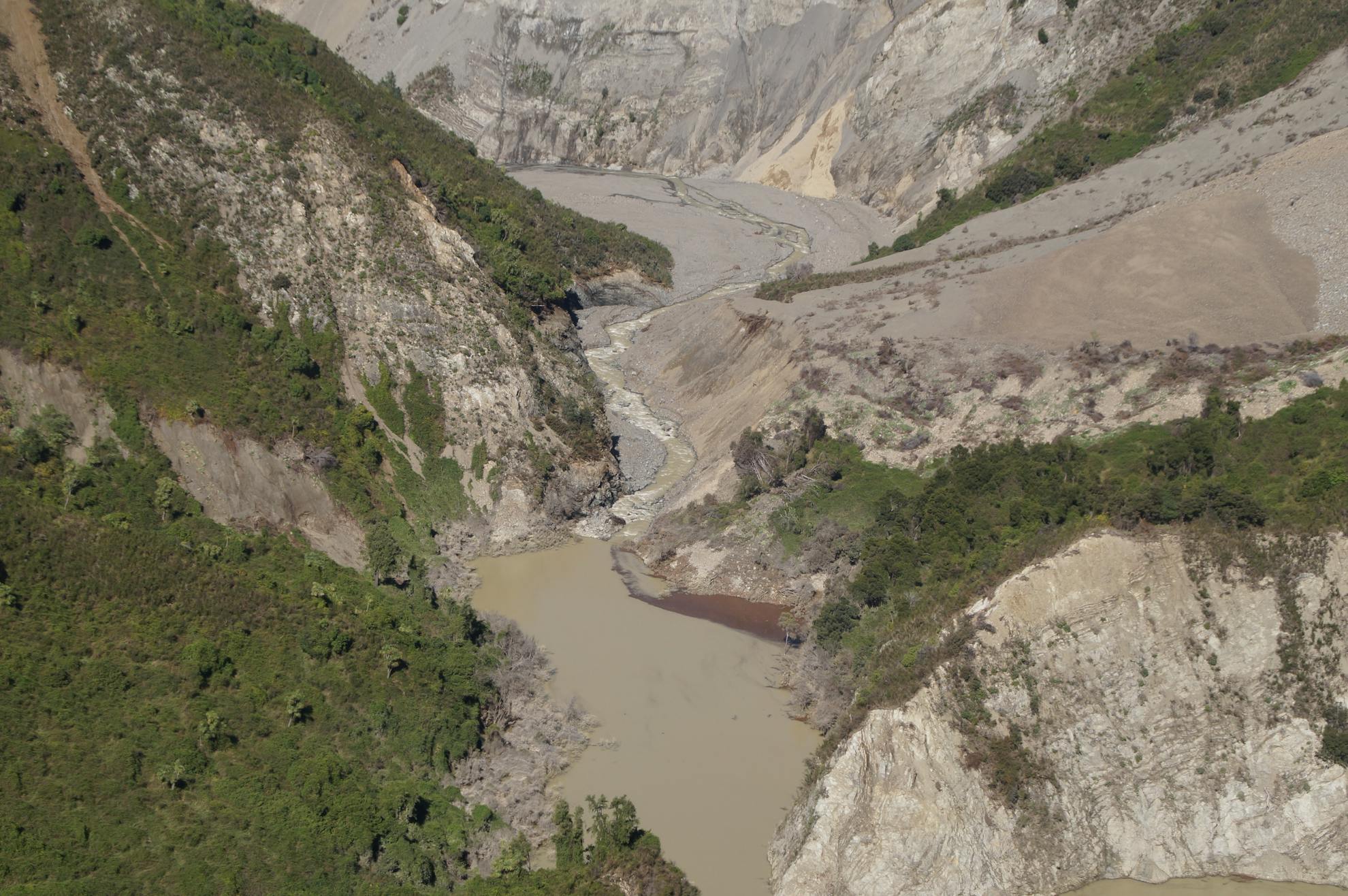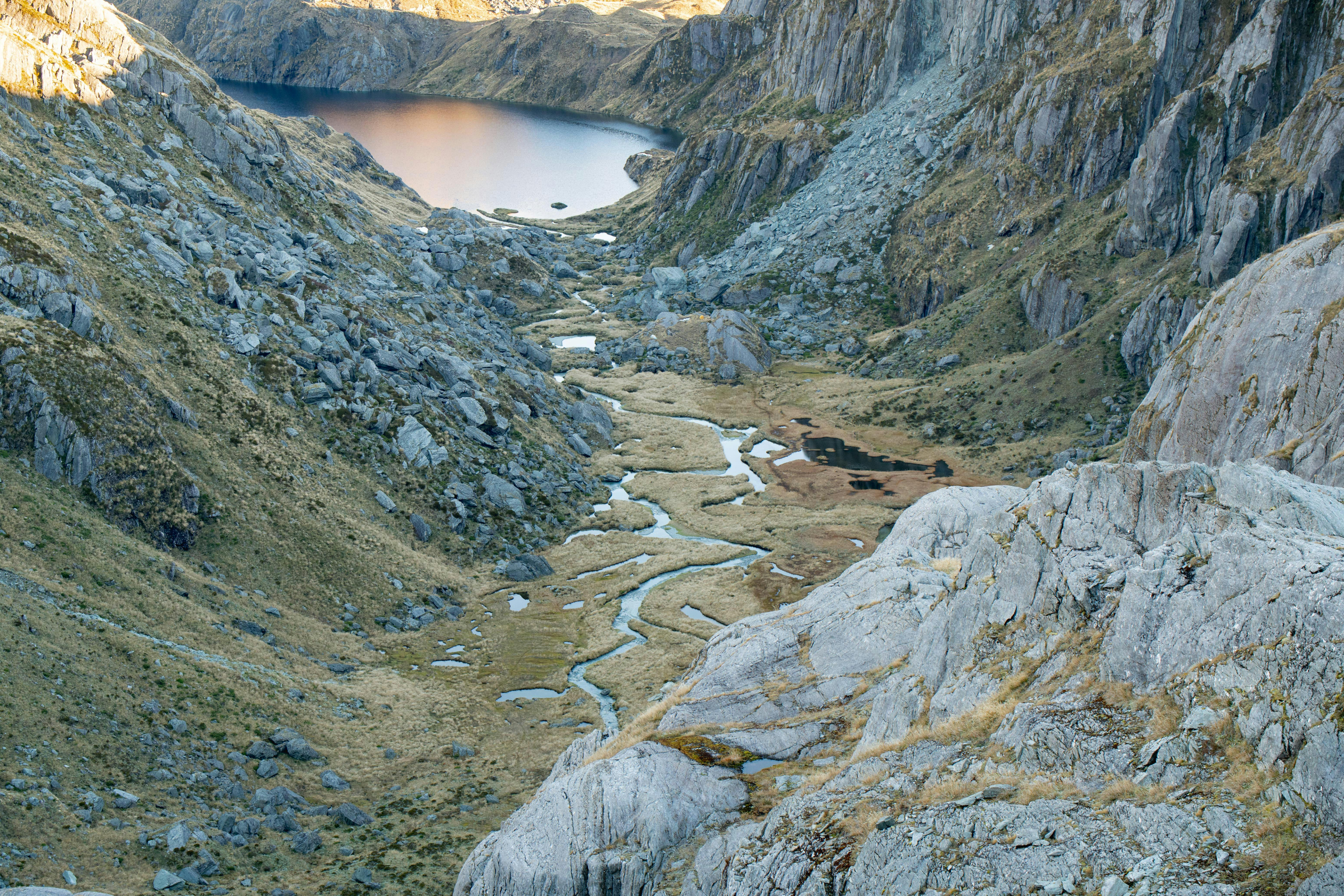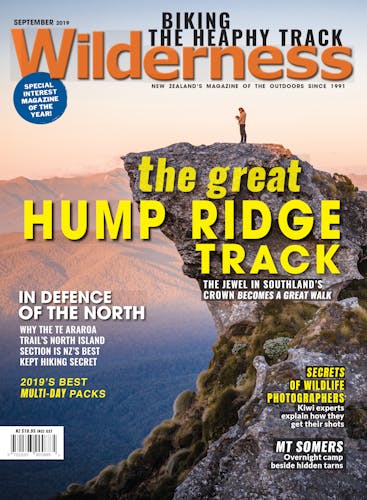New Zealand’s alpine landscapes are a picturesque product of the land’s tumultuous history, but the beauty comes at a cost. Matthew Cattin finds what to do when a quake shakes up the backcountry
Many Kiwis have memories of primary school earthquake drills – of diving under the desk and bracing their heads while the teacher counted backwards from 10.
Living in a geologically turbulent country, many too will have memories of the real thing.
But how many Kiwis know what to do when a big one strikes in the backcountry?
The alpine fault line, which runs through the Southern Alps, is due a decent shake and it’s not a matter of if, but when it starts to rumble.
QuakeCoRE’s Dr Caroline Orchiston works in the AF8 [Alpine Fault Magnitude 8) team, developing nationwide response plans for a magnitude 8 or higher quake.
“My interest in the alpine fault goes back 20 years of mapping the fault, and I’ve spent quite a lot of time in the hills thinking what it might mean to be sitting on the fault,” she says.
“Evidence suggests it generates a characteristic earthquake every 300 years, plus or minus a decade or two.
“The last time it went was in 1717, so the fault is towards the end of its seismic cycle.”
Orchiston says there is a knowledge gap in the outdoor community when it comes to earthquake preparedness.
“There’s a whole lot more we should be doing in terms of making information available to trampers and in huts – there is some out there, but we need a whole lot more,” she says.
That a large earthquake is due to shake the Alps shouldn’t come as a surprise, says Canterbury Civil Defence Emergency Management Canterbury’s Gareth Birch.
“You’re tramping through the very geological processes that shaped the landscape – literally the making and breaking of Aotearoa,” he says.
While scientists can study and measure patterns, there is currently no means of predicting when the alpine fault will let loose.
Orchiston doesn’t let the risk stop her from enjoying the backcountry, but always goes out “with fingers slightly crossed”.
“Anywhere you go in the mountains, there are inherent risks in your environment, so I don’t dwell on it too much,” she says.
“You don’t want to live your life in fear of something happening, but if it happens, you want to have in mind the things you might do.”

During a quake
In the event of a quake in the backcountry, Birch says the Civil Defence core teaching of ‘drop, cover and hold’ is still very much applicable – crouch low, brace yourself with your arms to cover your neck and head, and wait out the quake.
Research following the 2010/2011 Christchurch earthquakes found the majority of earthquake injuries were caused when people tried to move around during the ground shake.
“If you sprain your ankle running around unnecessarily when you’re in the backcountry, your situation becomes much more serious,” he says.
There is an exception to every rule, however, and it may be necessary to seek shelter from falling debris before bracing.
DOC principal advisor for visitor risk Don Bogie has experienced rockfalls on tramps before and says it’s important to keep an eye on higher ground for anything shaken loose.
“If [a quake] is big enough to make you stumble while walking, there will more than likely be rocks coming down,” he says.
“If you get caught in a landslide, your chances of getting away are minimal, but if rocks are rolling, the best way to avoid them is to watch them, and move out of the way when they get close, as they can change direction.”
Dust may also cause issues, potentially hindering visibility and breathing.
The intensity of ground shaking can differ greatly depending on terrain, Birch says, and generally speaking, shaking is less pronounced on flat ground compared to steep terrain.
“If you’re on a ridgeline or peak, you can experience up to 12 times the amount of shaking, as seismic waves get compressed as they rise through the ridge crest,” Birch says.
Tsunamis are another hazard to be wary of, whether you’re coastal or lakeside, and Civil Defence’s ‘if it’s long or strong, get gone’ mantra is another worth remembering.
Orchiston says people often forget that lakes can present dangers during earthquakes, such as landslide tsunamis and seiche (enclosed) waves.
Orchiston compares seiche waves to carrying a water bottle: “The water will slosh up the sides as soon as you start moving,’ she says. “If the whole lake is shaking, the waves can be significant.”
The aftermath
When the ground shaking has ceased, Birch says the first priority should be to check in with your party, facilitate first aid if required, and come up with a plan.
Aftershocks should be expected, and Birch says trampers should always consider if their location or route would be safe if there was an aftershock.
Landslides are likely to be one of the biggest track hazards in the aftermath, and trampers may find themselves isolated or trapped.
The Kaikoura earthquake of 2016 caused more than 10,000 landslides, and 196 landslide dams, behind which water can build up and form ‘quake lakes’.
These unstable dams can fail quickly and without warning and trampers should be wary of walking in low-lying valleys or river beds – especially if you notice a reduction in flow or it starts to rain.
Bogie says DOC huts are “generally pretty good” in earthquakes, and may be the best location to await help if an exit is impossible.
“[DOC] has tried as hard as it can to find safe sites, but you can never be 100 per cent sure something won’t happen,” he says.
“They’re small and light, and they have timber frames – they can handle a lot.”
Two huts were destroyed by rockslides in the Kaikoura earthquake, but no significant damage was recorded at any other huts.
Extraction
Depending on the severity of the earthquake, trampers may be a low priority for emergency response teams and those who are trapped should be prepared to wait several days before being rescued.
Birch advises trampers to share information, pool resources and stick together in groups if possible.
As for PLBs, the same rules apply as at any time in the backcountry – use it only if health or life is at risk.
If an exit is impossible, trampers should consider activating their PLB a day or two before they expect to run out of food.
Some huts are equipped with radio communication and while mobile phones may be another option, Birch warns they should not be relied on for communication as telecom systems can be impacted following a large quake.
Bogie says DOC’s response will depend on the size and extent of the quake, and there is no standardised extraction plan for trampers in the conservation estate.
“Whatever we do has to integrate with Civil Defence, and DOC staff become a smaller part of a bigger controller,” he says.
Birch says all advice is situationally dependent and works best when combined with common sense. Get the basics right – tell someone your plans, use the intentions books in huts and plan ahead by packing for an extra day or two. And don’t forget the standard backcountry safety measures such as carrying a PLB and taking appropriate gear.








